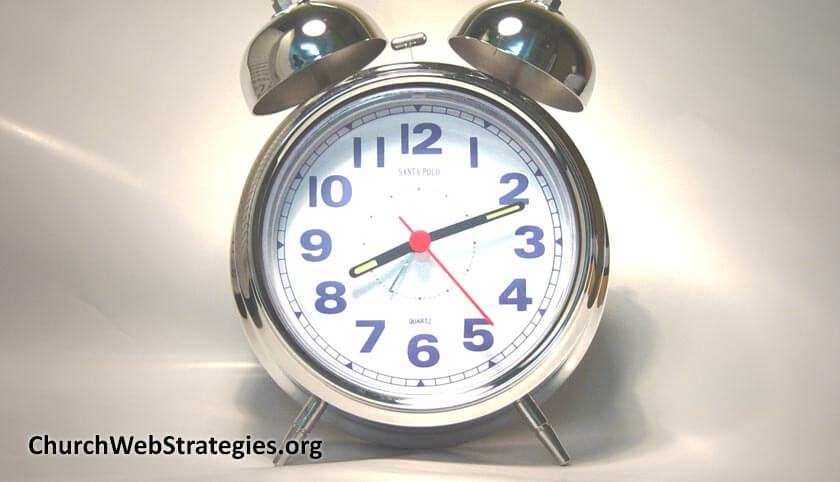Timing is everything in comedy… and church web marketing. If you can guess when your customers will be online, you can more effectively market to them. Whether it be Email or social media, there are several ways we can utilize this information to increase the number of clicks your communications get.
Creatures of Habit
Research conducted by SeeWhy.com on abandoned eCommerce shopping carts showed that contacting a customer 23 hours after they left the website was 20% more effective than other times. Why? Because we are creatures of habit. If we are online at a certain time today, we will most likely be on at the same time tomorrow. By sending an Email 23 hours later, it will be one of the newest items in our inbox when getting back online. That is great for an eCommerce site. But how does this apply to your church?
Consistency is Key
Regular contact with existing members can be timed to hit inboxes at two key times a day. First, you can try to get in when people first wake up for work. So the 6-8 AM timeframe might work if you would like to catch people as they check emails before they leave for work, or right as they start. The second time can be as people get home from work. Between 4-6 PM covers that time slot, as people get done with their workday and log on to check personal email at home. Either way, depending on your timing, you will hopefully find your message right at the top of their list.
Before and After Services
Contacting new and prospective members can also have two possible times. This is not centered around a particular time of day, but rather a time of the week. The first is a follow-up the day after the service they regularly attend. So if they attend a traditional Sunday morning service, then reach out to them on Monday. Re-cap what the sermon was, and offer calls to action to get involved with any ministries that were mentioned during the service. The second key timeframe is a day or two before their regular service. Again, considering a Sunday service, get in touch with them on Friday or Saturday. Preview what will be covered, and encourage them to attend. If there are any special circumstances, ranging from a guest preacher to an impediment to easy parking; make them aware of it.
Reminders
Reminders to special events should have a series of updates. I would recommend one month, two weeks, one week, and one day. This allows for members to make plans in advance to attend, two gentle nudges, and a last-minute reminder. Of course, you do not want to overload your members, so try to combine notifications. You might want to highlight a particular event, and have some additional reminders lower down in the message.
Not just Emails
Finally, these should not just be Email notifications. You can experiment with SMS reminders, post these updates to your social media outlets, and tie all of them back to regular content updates on your website. The regular updates will continue to boost your search engine rankings, and hopefully drive more traffic to your site. Each of these posts must have clear calls to action so users know what they need to read, and exactly what the next step is they should accomplish.
Action Item
Examine when and how you contact your Email lists. Execute your mailings in conjunction with your social media efforts. Then thoroughly refine your landing pages so each page has a clear call to action. If you talk about how great it is to get involved, be sure to show them how to sign up for that ministry, or how to make reservations for your spaghetti dinner. Over time you can refine your timing, review your analytics data, and further boost your conversions to new heights!
Photo courtesy of Ronen Ijansempoi

